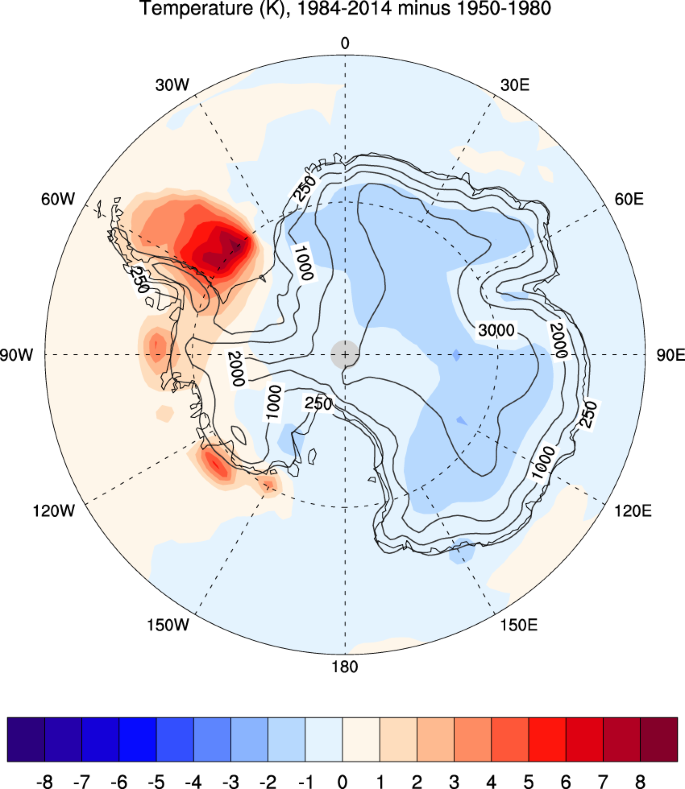by Linnea Lueken, Climate Depot:

A recent article posted by CNN claims that western Antarctica is melting rapidly and can’t be stopped, due to human-caused global warming, which will result in a dangerous rise ocean levels. This is false. While the West Antarctic Ice Sheet (WAIS) has seen more melting than other parts of the continent, it is due not to climate change but rather to localized temporary weather conditions and ongoing subsurface volcanic activity below the ice sheet. Indeed, outside of West Antarctica and the Antarctic peninsula, the larger part of the continent has gained ice mass in recent decades and has actually experienced a cooling trend.
TRUTH LIVES on at https://sgtreport.tv/
The article, “Rapid melting in West Antarctica is ‘unavoidable,’ with potentially disastrous consequences for sea level rise, study finds,” says that West Antarctica’s ice shelves are melting rapidly, and probably can’t be stopped. CNN claims this will lead to “potentially devastating implications for sea level rise around the world,” citing a recent study in Nature Climate Change. The study’s authors claim that even if the world were to meet emissions and warming targets, like limiting warming to 1.5°C above pre-industrial global average temperature, the WAIS will still experience “substantial ocean warming and ice shelf melting[.]”
The study’s authors considered most WAIS melting to be due to “basal melting,” due to warm ocean currents that heat the ice from below. It is notable that they do not consider subsurface geothermal heating from volcanic activity below the ice as a potential contributor, especially since several recent studies suggest that the WAIS, particularly around the Thwaites glacier, sits on top of a large number of subsurface volcanoes which are believed to be contributing to melting below the ice and localized increased water temperatures.
There is also a question as to whether or not Antarctica has seen much – if any – warming at all over the past 70 years, as discussed in the Climate Realism post “South Pole Warming Claims Contradicted by Actual Temperature Measurements.” According to NASA data, there was even some cooling between the early 2000s and 2019.
Basal melting, then, really is the best explanation, but only appears to be occurring in the WAIS, because the rest of the continent has seen a gain in ice mass in its interior.
Sea ice itself melting cannot contribute to sea level rise, since it is already displacing water, but the Nature Climate Change study’s authors explain that the melt of the sea ice can cause land ice to shift forward and likewise melt into the warmer waters. This makes sense and likely occurs; but the recorded interior ice mass gain makes it unclear whether there is a net loss of ice for Antarctica as a whole, and if so, by how much and at what rate, making claims about rising seas extremely uncertain. Data contained in a recent study even shows that Antarctica has seen a small expansion of sea ice in total over the past seven decades, providing a compelling visual demonstration of the continent’s recent cooling trend. (See graphic below)

Indeed, the authors of the Nature Climate Change study themselves admit that their modeling suggested “internal climate variability will be extremely important in determining the future of the WAIS.” Perhaps because this admitted uncertainty fails to advance the climate crisis narrative CNN consistently pushes, the news outlet did not quote from that portion of the study, and seemingly ignored its role in Antarctica’s net ice balance.
In the implications section, the authors explain that they only focused on a single ice-ocean model and a single climate model, in the process ignoring many other potential feedbacks. They also said that increased snowfall could actually offset sea level rise, which tracks with the ice mass gain in the interior as discussed. In any case, the study authors say adaptation should be a major focus when it comes to sea level rise over the next several centuries. Most notably, “[i]nternal climate variability, which we cannot predict or control, may be the deciding factor in the rate of ice loss during this time.”
Using only a single model, and including woefully flawed RCP8.5 scenario among those examined undercuts any confidence one might have in the accuracy of the study’s predictions.
Regarding “dangerous” sea level rise, again Antarctica’s contributions are uncertain. If, as some studies show, the interior and eastern portions are gaining ice even as the WAIS suffers some melt, the continent may not contribute very much at all. The authors acknowledge this. Regardless, adaption to sea level rise is something that city planners and developers should take into account, because as discussed in Climate Realism here, here, and here, sea levels are rising in some areas, and if there is ice melt as the planet modestly warms, we can expect this trend to continue, albeit at a less alarming pace than some in the media would have us believe.



